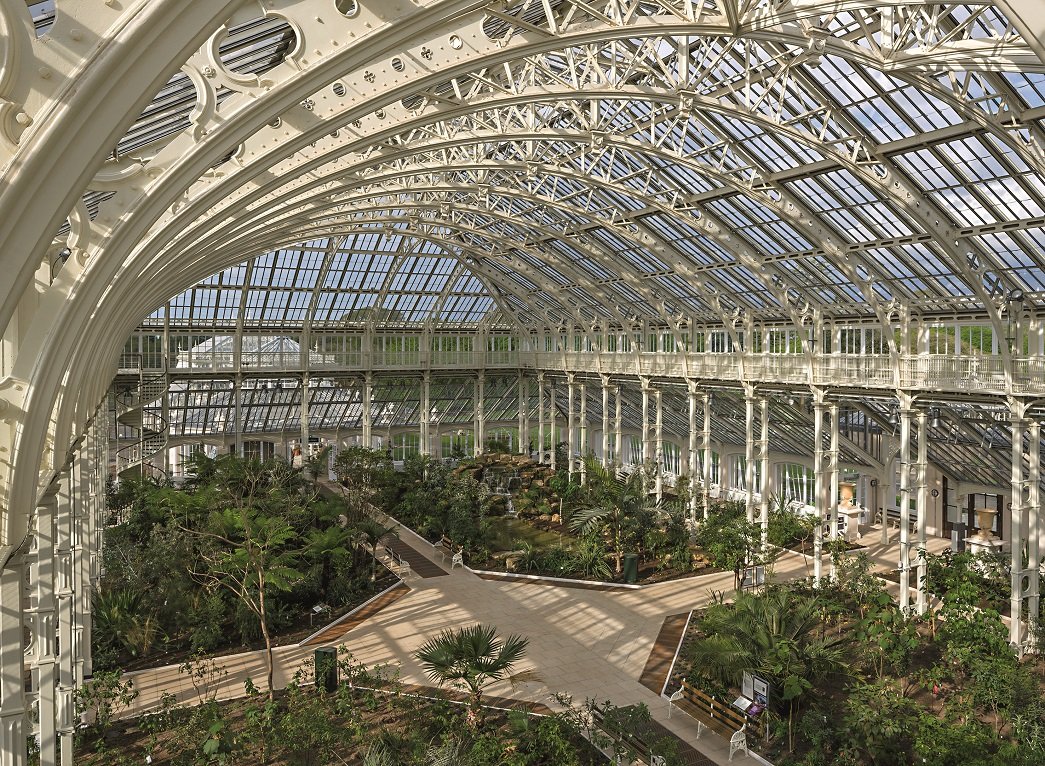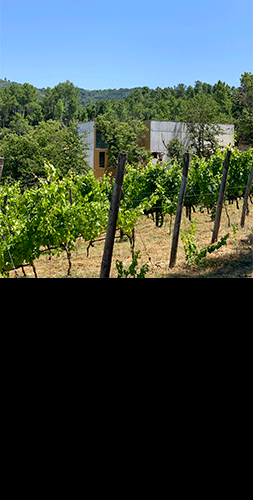
Designed by English
architect Decimus Burton, the Temperate House, a glasshouse at Kew Gardens
botanical garden, in southwest London, was first opened in 1863 and is the
largest glasshouse of Victorian architecture in the world. It has been closed
for five years for restoration works, before being reopened last May.
Within a structure that occupies 4880 sqm, composed of cast iron columns and 15,000 glass panels, there are more than 10,000 plants of 1500 different species, the rarest and most endangered of the world. But if within this glasshouse there are many species, the same can be said of the outer enclosure, where another natural world awaits. As you walk through Kew Gardens and its expansive area, you can’t help but be amazed by the impressive grandeur of its trees. In total there are more than 14,000, including evergreen redwood and giant sequoias. Some of these trees date from the 18th century, including a locust tree and a maidenhair, which are as old as the gardens themselves and unique in British territory.
Within a structure that occupies 4880 sqm, composed of cast iron columns and 15,000 glass panels, there are more than 10,000 plants of 1500 different species, the rarest and most endangered of the world.
Kew Gardens uniquely illustrates the characteristic periods of landscape design from the 18th to the 20th centuries, with environments created by internationally renowned landscape designers. The gardens have also been closely involved in the scientific changes that have taken place over time in the fields of botany and ecology, contributing significantly to biological conservation, especially through its seed bank, known as Kew’s Millennium Seed Bank, which already has more than 36,000 species of wild plants. As if this were not enough, the gardens are also home to extensive and varied collections: a herbarium with more than seven million species, more than 30,000 living plants and a library with more than 750,000 volumes and 175,000 drawings and illustrations of plants.
Within Kew Gardens, in addition to the Temperate House, there are various facilities, buildings and other glasshouses, such as The Hive, a palace, the Princess of Wales Conservatory, the Palm House, etc. David Attenborough, the famous television presenter and naturalist, is one of the local residents who regularly visit the gardens. «It is one of the world’s most important botanical institutes... Kew holds a very special place in the science of botany,” said the presenter, adding, with regard to the Temperate House, «it is a beautiful, breathtaking space. These plants are wonderful... and here they are protected from danger».
In 2003 Kew Gardens was inscribed on the list of UNESCO World Heritage sites. The place is much more than a botanical garden; it is an incredible complex, a classroom in the form of a garden, a botanical adventure around the globe.
Within a structure that occupies 4880 sqm, composed of cast iron columns and 15,000 glass panels, there are more than 10,000 plants of 1500 different species, the rarest and most endangered of the world. But if within this glasshouse there are many species, the same can be said of the outer enclosure, where another natural world awaits. As you walk through Kew Gardens and its expansive area, you can’t help but be amazed by the impressive grandeur of its trees. In total there are more than 14,000, including evergreen redwood and giant sequoias. Some of these trees date from the 18th century, including a locust tree and a maidenhair, which are as old as the gardens themselves and unique in British territory.
Within a structure that occupies 4880 sqm, composed of cast iron columns and 15,000 glass panels, there are more than 10,000 plants of 1500 different species, the rarest and most endangered of the world.
Kew Gardens uniquely illustrates the characteristic periods of landscape design from the 18th to the 20th centuries, with environments created by internationally renowned landscape designers. The gardens have also been closely involved in the scientific changes that have taken place over time in the fields of botany and ecology, contributing significantly to biological conservation, especially through its seed bank, known as Kew’s Millennium Seed Bank, which already has more than 36,000 species of wild plants. As if this were not enough, the gardens are also home to extensive and varied collections: a herbarium with more than seven million species, more than 30,000 living plants and a library with more than 750,000 volumes and 175,000 drawings and illustrations of plants.
Within Kew Gardens, in addition to the Temperate House, there are various facilities, buildings and other glasshouses, such as The Hive, a palace, the Princess of Wales Conservatory, the Palm House, etc. David Attenborough, the famous television presenter and naturalist, is one of the local residents who regularly visit the gardens. «It is one of the world’s most important botanical institutes... Kew holds a very special place in the science of botany,” said the presenter, adding, with regard to the Temperate House, «it is a beautiful, breathtaking space. These plants are wonderful... and here they are protected from danger».
In 2003 Kew Gardens was inscribed on the list of UNESCO World Heritage sites. The place is much more than a botanical garden; it is an incredible complex, a classroom in the form of a garden, a botanical adventure around the globe.













